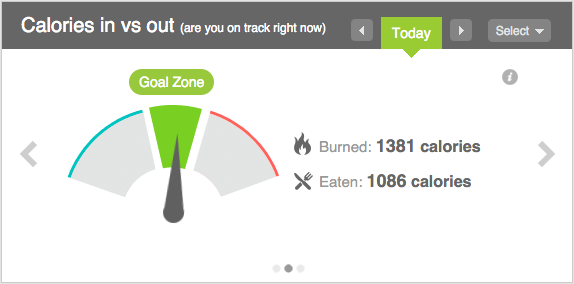
You can flip a candy bar over, read the label, and see how many calories it contains. But wouldn’t it also be helpful to know how many steps you’d have to take to burn it off? An expert in the UK is suggesting just that. Shirley Cramer, head of the Royal Society for Public Health, wants to make food labels more clear and meaningful by adding “activity equivalents.” If she gets her way, when you go to grab a bag of chips, you’d see icons with examples of physical activity—walking, running, or swimming!—along with the number of minutes you’d need to do that activity to burn off the calories you’re about to bite into.
“This is an idea we’ve been mulling on for a while,” says Cramer. “Our organization is all about supporting positive lifestyle changes. In the 6 seconds someone takes to read a food label, we wanted something that’s going to have big impact.” Cramer cites some shocking statistics—two-thirds of the UK is now overweight or obese, 70 percent in the US is too. The World Health Organization estimates that obesity has more than doubled since 1980, with 1.9 billion overweight and obese adults worldwide.
With that in mind, food labels have been a hot topic of discussion. First Lady Michelle Obama recently pushed through an update to US food labels, calling out added sugars, along with other key changes. And while more than half of people say they look at food labels, that number is self reported, and it’s not clear how much you get from a glance. Calories are kind of an abstract concept. There’s been lot of controversy and confusion between fat and sugar. And daily value percentages are based on an average that may or may not fit your life.
Activity equivalents could be an easier way to imagine energy in and energy out. If you’re curious, check out what these little labels might look like for some of your favorite junk foods.

Activity equivalents are still based on averages, so they’re not personalized, and they’re not perfect. But they are easy to understand, surprising, and fun! Want to walk off that piece of pie? Better step it up! Cheering and chowing down on game-day nachos? Time out for some laps around the living room.
But if you really want the full picture, the answers are already on your wrist. Your Fitbit dashboard factors in your age, gender, weight, height, and activity level—and balances all of that against what you eat. When you open up the app, or navigate to your dashboard online, and click on the fork and knife icon, you’ll be taken to a food tab, where you’ll see “calories in” versus “calories out.” Hit the plus sign (top right) to log the foods that you’ve eaten today, and your fitness tracker and smart scale will do the rest of the math for you. Watching the needle bounce back and forth and balance out, you can see exactly how all of the steps and choices you make throughout the day add up. It’s really an amazingly personalized and comprehensive picture of your calorie needs.
View of “calories in versus out” from the Fitbit online dashboard
View of “calories in versus out” from the Fitbit app
The point is to encourage and motivate, so you’re inspired into healthy habits. “We want to get people moving,” says Cramer. “Our examples are for running and swimming, but getting people to move is what’s really important, whether that’s gardening, housework, or simply getting off the bus one stop earlier. Once you understand the relationship between how much you eat and your activity level, you’re encouraged to make healthier choices—so you’ll stick to one packet of crisps, have the smaller bun, save that ice cream for tomorrow, go for the banana now.”
What do you think about adding activity equivalents to food labels? Join the conversation, below.
This information is for educational purposes only and is not intended as a substitute for medical diagnosis or treatment. You should not use this information to diagnose or treat a health problem or condition. Always check with your doctor before changing your diet, altering your sleep habits, taking supplements, or starting a new fitness routine.



Then, the products are guaranteed to haven’t any GMOs.